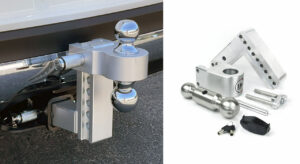If you need help choosing the right ASME pipe calibration block, there are a few things that you should consider. You need to think about the radius of the block you need, the thickness of the block, and the material used to make the block.
This post explores everything you need to know when choosing an ASME calibration block.
What is an ASME Basic Calibration Block?
An ASME basic calibration block is a section of a pipe that has been specially designed to look like the original pipe but with basic flaws introduced. Some flaws introduced in the ASME calibration block include the curvature length, extra-axial, rearranged notch layout, and a special angle cut at one end of the block. The ASME calibration block is used in the phased array inspection of pipes and other hollow parts of machines.
The basic concept of the ASTM standard for pipe profiles is to allow measurements to be made in parts manufactured under controlled conditions relative to specifications by eliminating any effects caused by variations in manufacturing or installation methods or by variations from part to part from the materials used.
Suggestion: 6 Best Bath And Body Works Car Scents Review & Buying Guide.
The ASME basic calibration block is used in hydraulic and pneumatic pressure sensors, hydraulic and pneumatic actuators, and other measuring instruments.
How To Choose The Proper Curvature?
When choosing the proper Curvature of an ASME calibration block, the following rules must be followed:
- If the pipe you want to inspect has a diameter of 20 inches, use a flat block. Use a curved block if the pipe’s diameter is less than 20.
- When using a curved block, multiply the diameter of the calibration block by 0.9 to 1.5. This is the diameter of pipes for which the curved calibration block is suitable. For instance, when using a curved calibration block of 10 inches, you can inspect 9 to 15 inches in diameter pipes.
How to choose the proper Thickness?
According to the ASME standards and requirements, the calibration block should have a 25% thickness of the pipe being inspected. However, certain pressures or heat may affect the thickness of the block. If do not know how to calculate the proper thickness of your pipe, choose a thicker block.
Popular For You: The Best Self-Driving Cars 2023 To Step Into The Future: Everything You Need To Know.
When selecting an ASME calibration block, you need to consider two materials: Stainless steel and brass. Both are equally good; according to industry standards, they would last for as long as 15 years. Stainless steel blocks are usually chosen because they do not corrode or rust even under high pressures, while brass blocks may break quickly.
Types of ASME Basic Calibration Block
ASME Basic Calibration block 0.5 Inch Steel: The basic calibration block is often referred to in the industry as a 0.5-inch steel block. This is the most common and best-known type of ASME basic calibration block. This particular standard falls within the classification of ANSI-ASME B16.24-2007, which is recognized by all major trading bodies as a recognized standard.
ASME Basic Calibration Block 0.5 Inch Aluminum: An aluminum basic calibration block is also referred to as a 0.5-inch aluminum block or A-50 block. This particular block has a thickness of 0.5 inches, and its made from aluminum.
ASME Calibration block 0.75 Inch Steel: The calibration block is also called a 0.75 steel block. This particular type of calibration falls under the classifications of ANSI-ASME B16.19-2007, often recognized by the American National Standards Institute (ANSI) as a recognized standard.
ASME Calibration block 0.75 Inch Aluminum: The 0.75-inch aluminum calibration block falls within the classifications ANSI-ASME B16.26-2007, which ANSI also recognizes as a recognized standard for this type of basic calibration block. The 0.75-inch aluminum basic calibration has a thickness of 0.75 inches, and it’s made from aluminum.
ASME Calibration block 1.5-inch Steel: The 1.5-inch steel basic block can also be referred to as the 1.50-inch steel block or the A-52 calibration block. The ASME basic calibration has a thickness of 0.75 inches and is made from steel or brass material.
ASME Calibration block 1.5 Inch Brass: Brass basic blocks fall under the classifications of ANSI-ASME B16.22-2007. The brass basic calibration block has a thickness of 1.5 inches.
Conclusion
ASME basic calibration block is an important instrument used to calibrate and inspect measurements of pipes, valves, and other hollow parts. The material of the ASME basic calibration block you choose should be relevant to the applications you are using the device for.
When choosing an ASME basic calibration block, it’s important to consider the size of the pipe being inspected as well as any pressure that will be exerted on the device while in use.
Discover more from Locar Deals
Subscribe to get the latest posts to your email.





